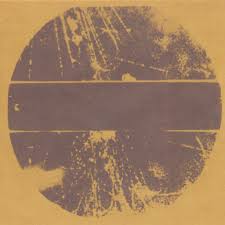If you’ve been scouring the main news sites recently you may have seen the interesting story coming out from Google’s research labs about their experiments with digital neural networks that ended up creating "inception" art. Instead of using artificial neural networks in the way they’re normally used (teaching them to "learn" how perceive objects by feeding it millions of examples), they turned the process around by introducing the network to random images and then concentrating on sections of the image when parts of the network trained to find a particular object – a tree, a banana, etc – became active. The result was that simple images, from landscapes to abstract noise, turned into psychedelic monstrosities. They looked familiar but at the same time, were distorted and at times disturbing.
This story was the first thing that came into my head on first hearing LP, the latest album from noisenik-cum-beat-maker Ren Schofield, aka Container, and the third to be released though Spectrum Spools, sub-label of contemporary-electronic citadel Editions Mego. In past interviews, Schofield has remarked that while he intended Container to be purely a techno project, he doesn’t really listen to much techno at all, citing only the work of producers Daniel Bell and Swede Jan Svensson as inspirations. As a result he approaches making beats with the same approach he does to making noise music.
The result of this can be seen in LP‘s blistering 7-track salvo, where it’s as if Schofield is acting like a DIY artificial neural network, using an algorithm of "noise" as a music making approach and being let loose on standardised techno landscapes. Schofield seeks out and magnifies the distortions, the slips, the blow-outs, the drops that are hidden within these landscapes, and filters, organises and recalibrates them into a savage mass of dirty FX and broken tech, a Hieronymous Bosch of techno that at once seems familiar, yet utterly warped and alien.
Straight from the piercing high frequency screech of opening track ‘EJECT’, the dynamics of LP seem more attuned to noise rock or punk than the calm building and layering of an electronic groove. Indeed, on tracks such as ‘REMOVER’ and ‘CUSHION’, techno images are ruptured and corrupted with a sense of inquisitive abandon and, like any child (or artificial brain) learning something for the first time, turns the results inside out and spills it all onto the floor. Schofield-as-neural-network focuses in on random sounds and elements that are often peripheral in techno and brings them to the front, whereupon they become the base noise material for both the annihilating rhythms and the machinic melody. You have the lurching and swaying tom rhythms in ‘ABSORB’ that threaten to topple over with its galloping energy, the buzzing synth and bouncing bass lines in ‘PERIPHERAL’, to the stabbing, modem shrieks of the closing track, ‘CALIBRATE’.
Throughout LP there are no moments in which to pause, or breathe, or process. Instead LP builds on a structure of blunt force intensities with no breaks or gaps between the tracks (A strategy that was also used by Prurient a few years back with his noise-cum-cybergothic paean Bermuda Drain). As such, LP, bucks the trend for most techno albums in that it’s breathtakingly short, clocking in at around 25 minutes. There is no being taken on a conceptual journey, or losing yourself in these tracks. They overwhelm and punish your ears and synapses, disappearing before you get a chance to acclimatise yourself. Asymmetric guerrilla dancefloor bangers in effect.
<div class="fb-comments" data-href="http://thequietus.com/articles/18246-container-lp-review” data-width="550">



